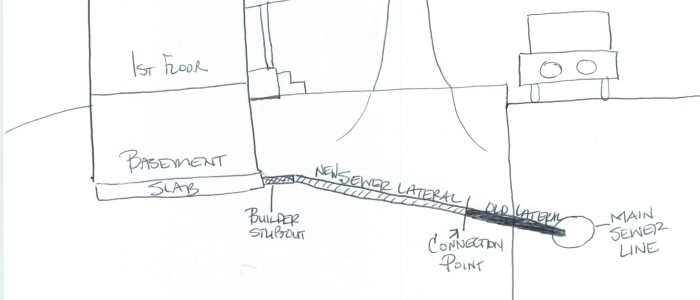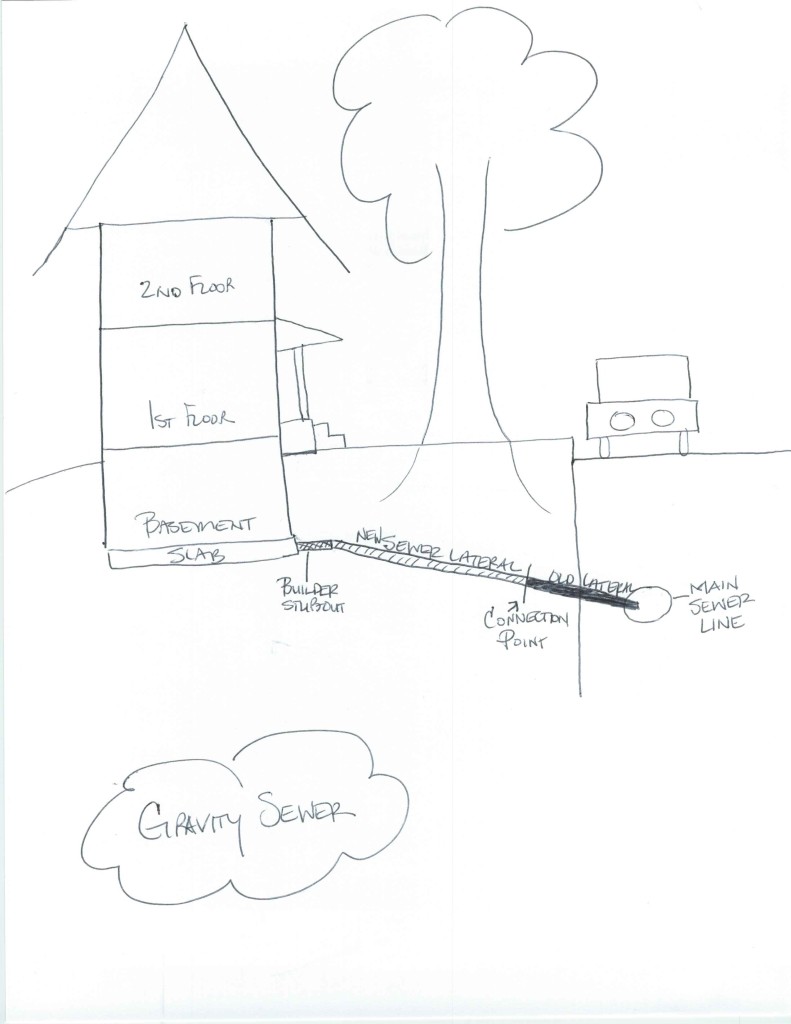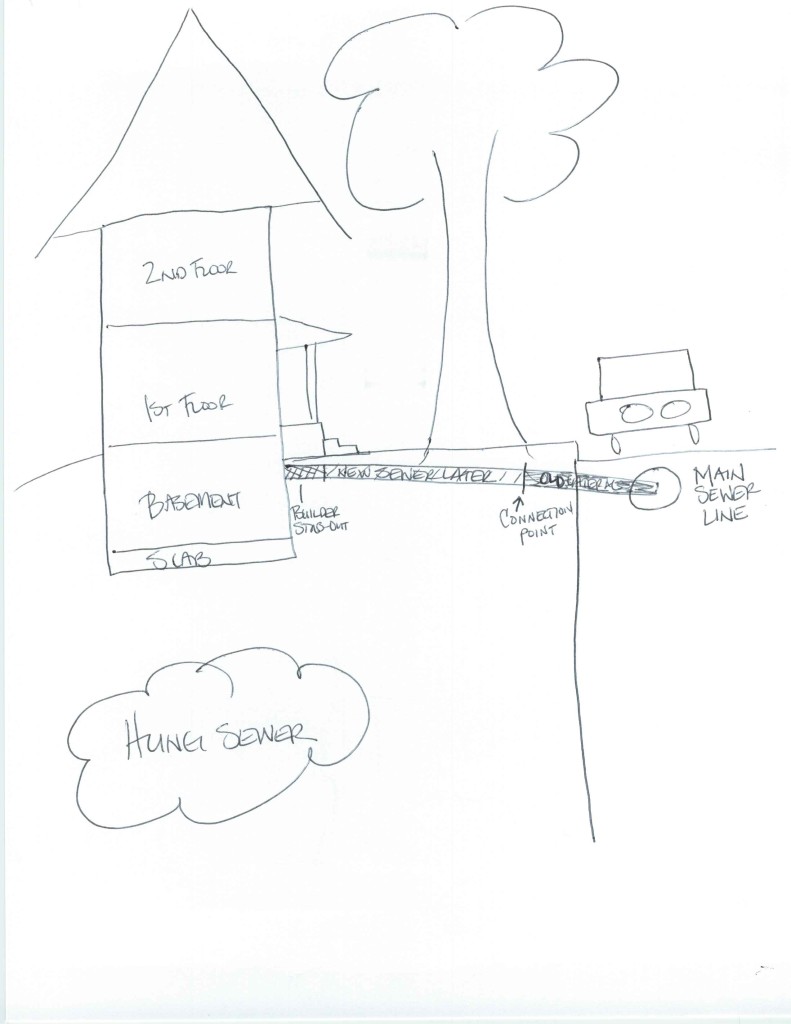Your Sewer Line: To Hang or Not To Hang

There is nothing more exciting than talking about sewer lines. Just kidding. I’ve struggled getting this post written. I’m just not that jazzed about sewer lines. They’re kind of gross. But when you are building a custom home, I think it is an important conversation to have. Not only so you know how the sewer system in your home is built but also so you can make informed decisions so all of your “stuff” goes to the proper place.
Here it is…everything you thought you never wanted to know about sewer lines.
Gravity Sewer vs. Hung Sewer
When a new house is built, the new sewer lateral (the line between the house and the main sewer line in the street) will need to be connected. This is done by running a new lateral (line) from the builder stub-out and reconnecting it to the old sewer lateral (line) which connects to the main sewer line.
Normally, the plumbing lines that service the plumbing fixtures inside the house are run under the basement slab. Before these lines are run, it must be confirmed that the sewer lateral exiting the house has enough “fall” to meet the main sewer line in the street using gravity alone. If the main sewer line is lower than the basement slab (how much lower it needs to be depends on the distance between the house and the street), then gravity can do all the work to get the sewer “stuff” out of the house and out to the main.
Here’s some fancy artwork to illustrate a Gravity Sewer System…
If the basement slab is lower than the main sewer line in the street, the plumbing lines for the upper levels (non-basement) need to be “hung” in the basement so gravity can work to get the sewer “stuff” out of the house and to the main. If there are basement plumbing fixtures (bathroom, wet bar, laundry room, etc.) a pump is installed to get the “stuff” from the basement plumbing fixtures out of the house. This pump is called an ejector pump (or grinder pump). So in a hung sewer scenario, the plumbing fixtures on the main level and upper floor work on a gravity system while the basement plumbing fixtures work on a pump system.
More art to illustrate a Hung Sewer System…
When is the sewer determined?
Most counties in northern Virginia keep records of their public sewer lines. Specifically, the elevation of these main sewer lines (how deep below grade). Some of these records are very old and quite frankly, might be wrong. In order to make the proper sewer determination, it’s suggested that the elevation of the main sewer line be verified at the foundation footer stage. The contractor installing the sewer line can easily determine the sewer at this stage so that all of the plumbing is installed correctly. If there is enough “fall” between the new basement slab and the main sewer line, it’s a gravity sewer system. If the main sewer line is higher than the basement slab, it’s a hung sewer system.
So now I have to have a hung sewer. What does this mean?
If it’s determined you need a hung sewer, the ejector crock and pump will need to be installed in order for basement plumbing fixtures to work. Everything will operate the same except you have a pump getting the “stuff” from the basement to the main sewer line instead of gravity. It also means that if you have a power outage, you should not use the basement plumbing fixtures (all plumbing on the main and upper levels will work fine during power outage because they will operate on gravity – no power needed for that).
Do I get a choice?
Not usually but in some cases, yes. If there isn’t enough fall from the connection of the existing sewer lateral to the main sewer line but a new lateral run in a different configuration might make gravity to the main, you may have a choice. Running a new lateral involves cutting into the street in order to the make the connection to the main. This would eliminate the need for the hung sewer and ejector pump but it does involve significant work (street cutting is expensive) which can be more costly than a hung sewer.
Even when given a choice, most clients don’t opt for the street cut. They will go with the hung sewer and move on. I have a hung sewer in my house. I’ve never had an issue (knocking on wood now) and I hear of very few issues from clients living in a hung sewer house (knocking on wood again). In fact, I can’t think of a sewer line issue caused by a hung sewer system.
Bottom (no pun intended) line, there are certainly worse things than having a hung sewer.
Like blog posts about hung sewers?
Dream Big. Build Smart.


Thanks for explaining that the sewer lateral should be able to meet the main line using gravity alone. My husband and I are having a custom home built soon. Your article helped me understand why using a sewer line locating service will be necessary.